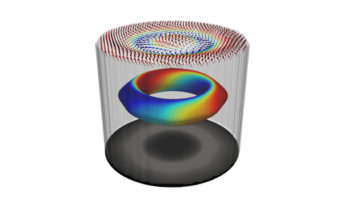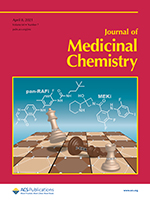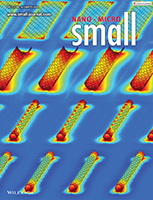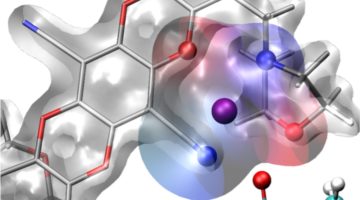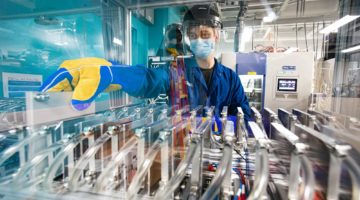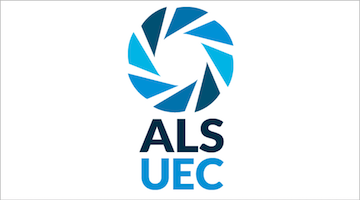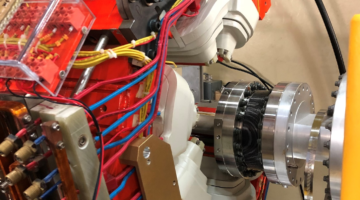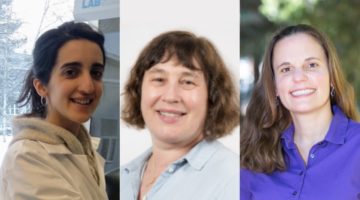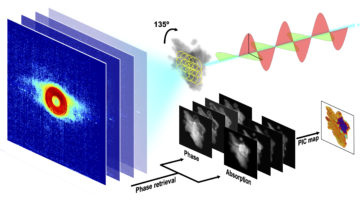Scientists have long treated skyrmions as merely 2D objects. Recent studies, however, have suggested that 2D skyrmions could actually be the genesis of a 3D spin pattern called hopfions. Now, a team of researchers has reported the first demonstration and observation of 3D hopfions emerging from skyrmions at the nanoscale in a magnetic system. Read more »
All News & Updates
Targeting KRAS Mutant Cancers via Combination Treatment: Discovery of a 5-Fluoro-4-(3H)-quinazolinone Aryl Urea pan-RAF Kinase Inhibitor
The cover feature shows a chessboard (representative of KRAS mutant cells) and how the concerted action of the MEK inhibitor cobimetinib (rook) and the new selective pan-RAF inhibitor GNE-0749 (queen) force the opposing king (phospho-ERK, the downstream signaling node of RAF and MEK) into checkmate. Read more »
Hybridized Radial and Edge Coupled 3D Plasmon Modes in Self-Assembled Graphene Nanocylinders
The researchers report hybridized 3D plasmon modes stemming from 3D graphene nanostructures, resulting in non-surface-limited (volumetric) field enhancements and a four orders of magnitude stronger field at the openings of cylinders than in rectangular 2D graphene ribbons. Read more »
Designing Selective Membranes for Batteries Using a Drug Discovery Toolbox
Researchers designed a polymer membrane with molecular cages built into its pores that hold positively charged ions from a lithium salt. These “solvation cages” increased lithium-ion flow by an order of magnitude and could allow high-voltage battery cells to operate at higher power and more efficiently, important for both electric vehicles and aircraft. Read more »
X-Ray Experiments, Machine Learning Could Trim Years Off Battery R&D
Scanning transmission x-ray microscopy at the ALS’s COSMIC beamline contributed to a battery study that used an innovative approach to machine learning to speed up the learning curve about a process that shortens the life of fast-charging lithium batteries. It represents the first time this brand of “scientific machine learning” was applied to battery cycling. Read more »
March 2021 Message from the UEC
As the ALS plans for the safe return of staff and users to the Berkeley Lab site, the Users’ Executive Committee is here to help the user community navigate the unknowns. The UEC also encourages users to attend the “Science enabled by ALS-U” seminar series; the next talk is Friday, April 2. Read more »
Winter 2021 Shutdown Recap
During the Winter 2021 shutdown, the ALS was a hive of activity, though social distancing requirements during the pandemic meant that the activity looked a bit different from years past. We began commissioning on March 26 and plan to return to user operations after commissioning concludes. Read more »
Clency Easterling, Senior Material Specialist
Even before joining the ALS in 2015, Clency was impressed by the scientific mission of the facility. Although his work takes him all over the ALS, he is interested in one particular type of research—find out what has captured his attention. Read more »
March 2021 Awards and Honors for ALS Users
Ane Etxebarria wins Marie Skłodowska-Curie Fellowship, and DOE recognizes Marca Doeff and Johanna Nelson Weker for their significant contributions to energy storage research. Congratulations to these members of the ALS community on their achievements! Read more »
Coral Skeleton Reveals Hidden Structures under Multimodal Scrutiny
A powerful new microscope combining ptychography with x-ray linear dichroism provides nanoscale insight into the biomineral strength and resilience of a coral skeleton. The technique’s previously unachievable spatial resolution and contrast will open up new lines of research for users of x-ray microscopy at the ALS. Read more »
- « Previous Page
- 1
- …
- 53
- 54
- 55
- 56
- 57
- …
- 139
- Next Page »
